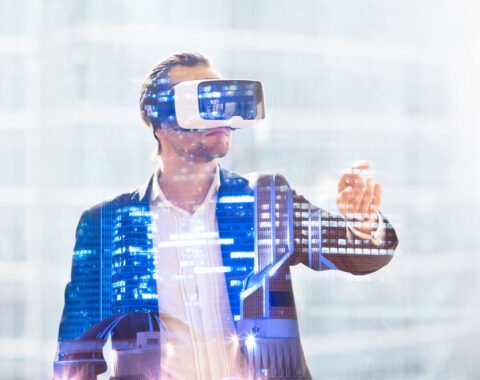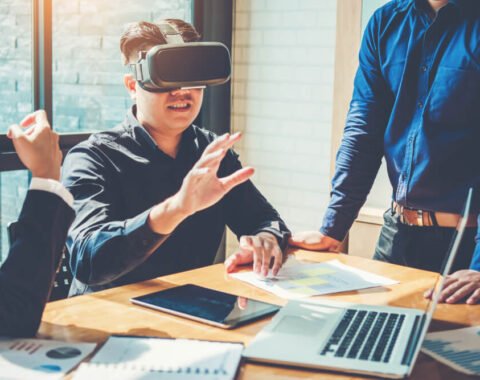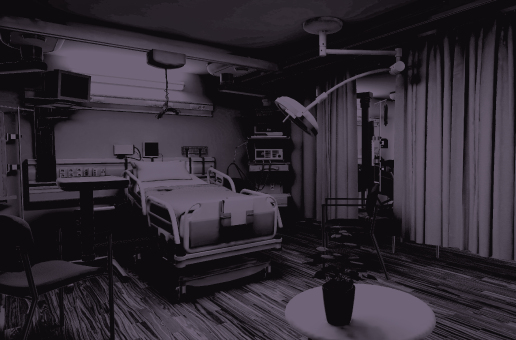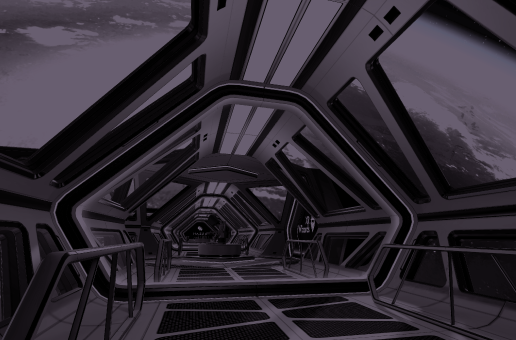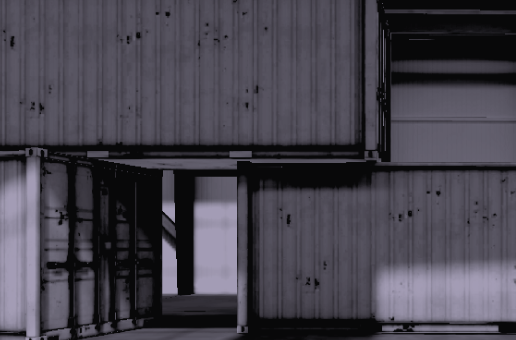Table of Contents:
Imagine your business partner or student, halfway around the world in the US, joining your meeting or lecture. Not just their face on the screen or their voice on the speakerphone, but their full presence in 3D with virtual clarity. Imagine a class full of students living somewhere far away from you, carefully listening to your lesson face-to-face. These days, VR solutions and teleportation are no longer confined to the world of science fiction – they have become a scientific reality. Once futuristic technologies are becoming more and more a part of the real world, and they are set to have a significant effect on the future of virtual meetings, events and tourism. After the pandemic of 2020, the acceleration of digital technology is moving even faster, driven by the rapidly increasing demand for remote work. One of the latest advancements in mixed-reality technology is holoportation, a portmanteau of holographic teleportation. But what is hologram technology? And is holoportation in education going to be a new trend in the years to come?
What is holoportation?
Holoportation, also called hologram technology, is a combination of the words ‘hologram’ and ‘teleportation’. Simply put, holoportation enables the user to see, hear and interact with remote participants in 3D. It’s like they are actually present in the same physical space. According to Microsoft, ‘Hologram technology is a new type of 3D capture technology that allows 3D models of people to be reconstructed, compressed and transmitted anywhere in the world in real time’. How does it work? Users must be in a room equipped with capture technology which then reconstructs and transmits the user as a 3D model. This allows users to see, hear and speak to each other as if they were in the very same room having a normal face-to-face conversation, which goes way beyond current online meeting technologies. Multiple 3D cameras capture footage of the remote user from different angles and these images are combined to create an accurate model of them. Even if a holoportation meeting cannot beat a true face-to-face one, it’s as close as we can get without being in the same room together, which is a real breakthrough, especially now, when most of us work remotely.
How can hologram technology be used?
Holoportation could be a real game-changer in telecommunications. Conveying the feeling of actually physically being with someone through technology will undoubtedly enhance current video conferencing and chatting technologies. Holoportation might just be a huge step forward in the search for evocative telepresence, but it could also have applications beyond simply making online meetings feel more real. In architecture, for example, it could be used to showcase 3D models to clients in real time. This would improve efficiency and increase satisfaction among both clients and architects. And just imagine fashion designers being able to display real-life models wearing the latest designs to potential retailers without the costs of elaborate fashion shows! One more important thing to consider is the unique chance to hang out with loved ones who live on different continents. Hologram technology makes it possible for those separated by great distances to engage and play with each other. In the near future, we may all be holoporting home to talk and laugh with family and friends.
Holoportation in education
When it comes to the learning environment, holoportation possesses great potential. Different schools can interact with each other, even experiencing the same lessons together, while students, including those with disabilities, can attend lessons from the comfort of their homes because there is no longer any need for them to be physically there in the classroom. Remote learning and tutoring will also be revolutionized as students will be able to collaborate with their peers from around the world in a virtual space in real time. They could also explore other schools and take school trips to famous landmarks without accommodation fees and transportation costs.
What are the drawbacks of hologram technology?
Holoportation promises incredible opportunities in transforming the work and learning environments. At the moment, the biggest issue with making hologram technology more accessible is the cost, with the technology still requiring a lot of high-end, expensive equipment. However, the price is going down all the time, for example, through applications such as Microsoft Mesh – a revolutionary project from Microsoft Research that makes it possible for developers to design immersive applications without worrying about complex technical issues. The end user doesn’t need any sophisticated equipment and there are no astronomical costs either.
What is Microsoft Mesh?
Microsoft Mesh is an innovative infrastructure that allows developers to make mixed reality work on most platforms and with more than just one person. With the Microsoft holoportation solution, you can interact with both digital things and other people at the same time. All of you can use a PC, mobile, tablet or HoloLens, or another computer that has a camera on it to see what is in front of you and a screen so that the computer is able to overlay digital things you can interact with. You can use Microsoft Mesh hologram technology in various ways. Possibly the most popular one at this stage is the holoportation meeting.
This has many advantages over current VR meeting apps. For example, in normal apps, you might have to ‘pinch and zoom’ your screen to see different objects which might appear as quite small on a phone or tablet, whereas in the same meeting, someone else wearing digital glasses will be able to see these objects like they are in the very same room. They are also able to see avatars of other people and interact with them. It is also possible to bring another person (or several people) into a holoportation meeting. From the developer’s point of view, Microsoft Mesh has AI-capabilities which enable massive multi-user online scenarios for mixed reality.
Is Mesh the future for regular end users?
Thanks to Microsoft holoportation, and hologram technology in general, people can feel like they are physically in the same place with someone else whilst sharing content, even though they are miles apart. They can also holoport from different XR devices. Microsoft claims that in the near future it will be possible to project lifelike holograms of real people themselves instead of just appearing as an avatar. So, holoportation is a vision for the future. As we’ve seen, it could provide breakthroughs in education and business, with eye contact, facial expressions and gestures all occurring as if in a face-to-face meeting in real time. Participating in classes or business meetings without leaving the safety of our own homes while also maintaining the feeling of being 100% involved will take us beyond the current solutions we have been using during the pandemic, possibly providing better solutions to future problems of this kind. While the existence of video calling and instant messaging are a substantial part of what has kept the economy from completely crumbling in the past two years, hologram technology will almost certainly be the next step towards running businesses remotely. Employees and coworkers will be able to duplicate the experience of in-person learning and cooperating without the time and cost of travel. Holoportation could also be valuable to the healthcare industry, enabling surgeons across the globe to share real-time expertise in performing procedures, which will create a new level of potential collaboration between hospitals and medical centers. Thus, healthcare interactions will be improved, but hologram technology also has massive potential to be integrated into a wide variety of other applications.
Summary: is holoportation the brave new world of today’s innovation?
In the coming years, hologram technology and its applications are set to completely transform the way we exist as social beings. From our houses, through our schools, to our hospitals and clinics, the high-end fusion of the virtual and physical worlds in real time will bring us closer to each other than ever before. During difficult times in particular (like now, during the COVID-19 pandemic), technology that enables people to maintain genuine human connections cannot be overvalued. Mixed-reality applications and similar tools have already become the catalyst for countless future opportunities. So, will they make it easier for businesses to reap the benefits of rapid, real communication? This is something which is happening right now in front of our eyes. Let’s wait and see for ourselves how it evolves.

